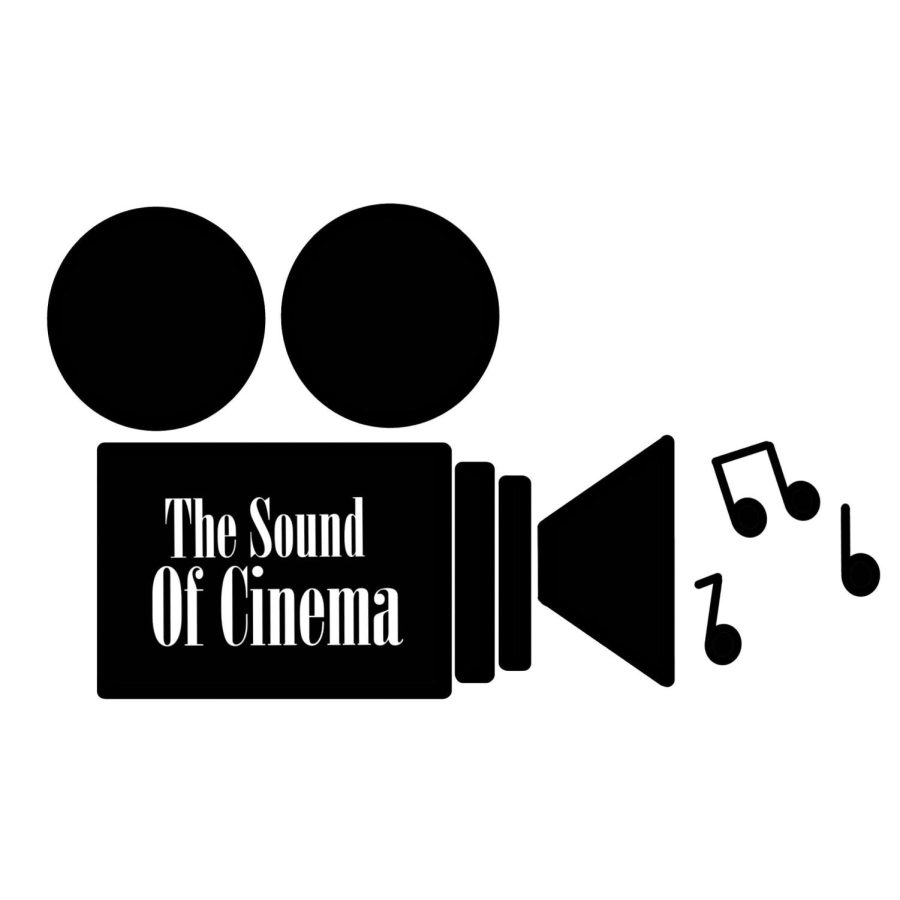The Sound of the Cinema | Constructing atmosphere with timbre and instrumentation
The Sound of the Cinema is a biweekly blog about music and sound design in films.
November 27, 2022
One of film music’s primary functions is creating an auditory atmosphere and expanding a film’s world beyond what is visually shown. In order to create the atmosphere that the director intends, composers can turn to timbre and instrumentation.
Timbre, or tone color, is the description of how the music sounds — not what the music is conveying, but how the instruments themselves sound in isolation or combination. Words like “dusty” and “sharp” are terms that can define a timbre well. Composers utilize timbre to construct atmospheres that support the diegeses, or fictional worlds, of films.
Take a moment to think of yourself as the composer for “The King” (2019), a Netflix film about Henry V which takes place in the 15th century. The director describes the film as dark and somber, and they want the music you write to heavily contribute to those two tones. Where would you start? If you were Nicholas Britell, you would decide to use low register strings, a low synthetic bass and an all-boys choir.
The score for “The King” is not like the classical orchestra scores composers such as John Williams popularized. The score is the perfect companion to the dark world of Henry V, the young man that finds himself becoming the King of England through battle and bloodshed. It maintains a dark moodiness for the duration of the film up until the end credits, when the orchestra finally blossoms with the beautiful final cue “Song of Hal: Conclusio in C Minor.” When I listen to the soundtrack, the world of the show comes back into my mind.
Not all scores affect the mood so vividly. The cue “Ballade in F# Minor: Trebuchets” brings back memories of fiery stones hitting castle walls and of the slow, repetitive nature of 15th-century warfare.
Other scores take a more classical approach to timbre. Nathan Johnson’s score for “Knives Out” (2019) takes a piano and a string quartet and creates a wonderful atmosphere representative of the whodunit film’s character. Out of the gate, Johnson’s score brings us into the world of Harlan Thrombey, an old man famous for his murder mystery novels. Johnson’s cue “Knives Out! (String Quartet in G Minor)” introduces us to the fast-paced, twisty-turny life of Harlan and his family after his mysterious death. The use of the string quartet sound gives a personal and slightly unsettling gesture to the film. The timbre of the music is raw and unpredictable, similar to the film’s narrative.
The scores for “The King” and “Knives Out” are drastically different, but both function brilliantly with their respective narratives. Neither of these scores could be considered classical, but both tap into the traditional string sound so deeply engraved in Hollywood’s history. This is an important observation to make because scores have changed dramatically since the classical Hollywood era. Contemporary scores strive to create atmospheres with any and all sounds, not just the orchestra. Of course, some scores still rely on the orchestra to design atmospheres, including BBC dramas like “Sherlock” (2010-2017).
David Arnold and Michael Price’s score for the four seasons of “Sherlock” use the orchestra to great effect. Blended with synthesizers, the orchestra helps set both the dramatic and intimate feelings in the show. Arnold’s cue “Final Act” exemplifies how large swathes of orchestral percussion can create tension. On the other hand, the orchestra can swell at moments of clarity and romance. In Series 2’s episode “A Scandal in Belgravia,” the cue “SHERlocked” rises into the forefront as Sherlock finally uncovers the password to a phone containing sensitive information. Once again, the orchestra creates the atmosphere the show sets from the off. Because of the music, we know that Sherlock has cracked the case and is about to unveil the truth about the antagonist and the phone’s password to us.
Across some of my previous articles, I’ve repeatedly come to the conclusion that film music is never definite. There are no right instruments, no right or wrong notes, no rhythm that is incorrect. What matters most in film music is whether or not it functions correctly with what is being visually portrayed. Tone color and instrumentation play a major role in this concept. What makes a certain score work is whether or not the timbre is correct. “The King,” “Knives Out” and “Sherlock” all have scores that have instrumentation and timbres that match the environments and diegeses that their creators set out to make.
Designing how the timbre should sound is a difficult problem to solve, but solving it correctly can allow the music to act as another character contributing to the story. Viewers can interpret and understand media more effectively with music that elevates the visuals. Look out for timbre and instrumentation in the media you watch and take note of how it works, or perhaps doesn’t work. Timbre is a key element in film music, and it’s a tool that’s necessary in order to unlock the auditory story a film is telling.
Alec Cassidy is a film production and music composition double major who writes about film scores. You can reach them at [email protected].








